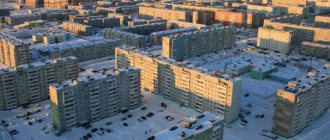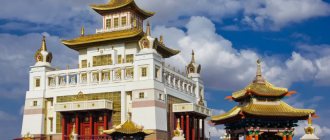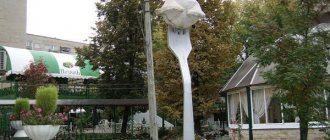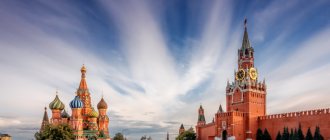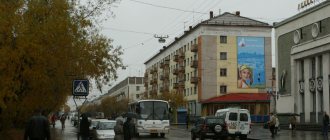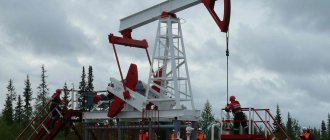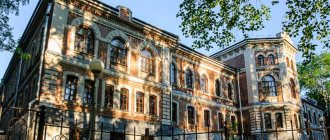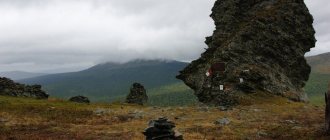Brief description of Syktyvkar
Syktyvkar is the capital of the Komi Republic and the center of the city district of the same name. The total area of the city is 152 km2, and the population is more than 280 thousand people. Syktyvkar took 128th place out of 165 cities in the ranking of attractiveness of urban living (2013). The city is located in the southwestern part of the republic (the left bank of the Sysola River), not far from the borders of the Arkhangelsk and Kirov regions.
Syktyvkar is located 412 km from Kirov
City `s history
The exact date of the formation of the first settlement in the city is unknown. In the Syktyvkar area, archaeologists have discovered traces of people from the Neolithic era (3rd century BC). Later evidence of settlement dates back to the 4th–9th centuries AD. The Komi people appeared here in the 16th century. Thanks to the close location of the Vychegda and Susola rivers, the territory was “inhabited” quite quickly. Since then, the status and name of the settlement have changed several times. At different times it was called Ust-Sysola, Syktyvdin, Kar, etc. The modern name of the city was assigned in 1930 (from the Komi language “Syktyv” is the name of the local river, “kar” is the status of the city).
In the 18th century, Ust-Sysolsky district became part of the Vologda governorate, and the city was officially founded in 1780. Later, the surrounding villages and towns were annexed to the district town, and by the 19th century a large trading center of the North had formed here. By 1897, Ust-Sysolsk became the fourth most populous city in the Vologda province. In 1921, the city became the center of the Autonomous Region of Komi, and the name Syktyvkar was given in honor of the 150th anniversary of the city status. In 1990, Syktyvkar became the capital of the republic. Now Syktyvkar is considered a provincial city, but its age and abundance of attractions make it attractive to tourists.
How to get to Syktyvkar
You can get to the capital of Komi in several ways:
- By plane from Moscow (Sheremetyevo, flight time about 2 hours), St. Petersburg, Sochi, Anapa, Kaliningrad, Perm, Surgut, Minvod, Ufa, Samara, Vorkuta and Yekaterinburg.
- By train from Moscow (about 25 hours), the Northern capital, Mikun, Pechora, Ukhta, Anapa, Vologda, Yaroslavl, Koslan, Usinsk, Vorkuta and other cities, but with a transfer.
- By bus from nearby cities (neighboring regions and autonomous okrugs).
- By car (roads: M7 and P-176, M8 and P-98).
You can get to Syktyvkar through the nearest cities: Arkhangelsk, Volsk, Vologda, Kirov, Ukhta
Komi in the Perm region
In the upper basin of the river. Kama, in the Urals, is located the Komi-Permyak Okrug - until 2005, an independent subject of the Russian Federation. Then it was merged with the Perm region, resulting in the creation of the Perm region.
The capital of the Komi-Permyak district - the city of Kudymkar - after the merger became the administrative center of the Kudymkar region. It is located on the tributaries of the Kama - the Inve and Kuva rivers. It is separated from Perm by 200 kilometers.
More than half of the city's population are Komi-Permyaks. In total, about 125 thousand people of this nationality live in the Russian Federation.
Sights of Syktyvkar
The capital of Komi has architectural and historical attractions, many cultural sites and beautiful natural places.
City architecture
The main architectural attractions of Syktyvkar are temples and cathedrals, as well as unusual works of monumental art.
St. Stephen's Cathedral
St. Stephen's Cathedral is a functioning Orthodox church dedicated to St. Stephen of Perm. He was a saint of the Zyryans (indigenous people of the republic) and an educator. The temple project was completed by architects: Kokushkin and Borichevsky. The cathedral has been built since 1856. After 27 years, the lower church of the cathedral was built, and after another 13 years, the entire cathedral was consecrated. Previously, there was another temple on the site of Stefanovo Cathedral, but it was destroyed by the Bolsheviks during the revolution.
Tourists may be interested not only in the architecture of the building, but also in the interior decoration - the walls of the cathedral are decorated with paintings in the Byzantine style. There is also a bell tower with the Tsar Bell next to the cathedral. Some are interested in the relics of St. Stephen, who converted pagan Zyryans to Christians in the 14th century. However, this shrine is kept in the Moscow Kremlin.
Information for tourists:
- address: Svobody Street, 60;
- official website: https://sykcentr-okrug.ru;
- Opening hours: daily from 7:00 to 1:00;
- the entrance is free.
Stephen's Cathedral, as the main spiritual center of Komi, was erected as a tribute to the memory of all compatriots who suffered during the repressions at the beginning of the 20th century, as a reminder of the persecution for the faith that the Church endured in Komi
Church of Christ the Savior
The Church of Christ the Savior was built in 1995. This is a Baptist church, it is also called the Syktyvkar house of prayer. The central religious building of this denomination stands out among the others, and there are 15 of them in total. The creator of the project was the architect E. P. Bulatov, and the temple building was built by teams of Baptists from other Russian regions, Ukraine and Moldova.
This church has its own choir, and services are held in both Russian and Komi. There is also a teenage club and a Sunday school at the temple. It is planned to install an organ, the sounds of which will accompany Sunday services. The interior of the temple is modest, there are no icons or frescoes, and the elders (Baptist priests) are not distinguished by special attire. They are chosen from members of the Baptist community.
Information for tourists:
- address: Oktyabrsky Avenue, 35;
- official website: https://tserkovkomi.rf;
- Opening hours: daily from 9:00 to 20:00;
- the entrance is free.
The Church of Christ the Savior is one of the largest Protestant temple buildings in the CIS
Kazan Church of Syktyvkar
The Kazan Church (Holy Kazan) was built before the 19th century. Then this church was called the chapel of Procopius and John of Ustyug. In 1860, peasants rebuilt the building, and in 1901 the temple was named in honor of the Kazan Icon of the Mother of God. This served as a miraculous rescue of the relic in a fire. After 1917, the church became a place of exile. Priests and lay people were sent here, and they were supported by the exiled Bishop Herman. Later he was accused of subversion and shot (1937). Since 1944, the temple became a reading hut, but when the war ended, it was used again. In 2001, Bishop Herman was canonized.
The church has a library, a Sunday school and a teenagers club. The main attraction, shrine and pride of the temple is the Kazan Icon. On major Christian holidays, the miraculous icon is lowered from the iconostasis so that worshipers can touch it. Tourists and pilgrims from different regions come here, as it is believed that the shrine can cure troubles, misfortunes and serious illnesses.
Information for tourists:
- address: Naberezhnaya street, 10 (Kochpon);
- official website: https://sobor.ucoz.ru;
- Opening hours: daily from 7:00 to 19:00;
- the entrance is free.
The walls of the temple are painted blue for a reason - it is believed that this color symbolizes the Virgin Mary
Monument to Peter and Fevronia
The monument to Peter and Fevronia was erected in 2004. The four-ton sculpture was created by the convicted A. Galushkin, and the sketch of the monument was drawn up by Bishop Pitirim. The 3-meter-high monument is covered in bronze, but the sculptor used a new sculpting technique, covering a concrete blank with bronze.
For 800 years, Orthodox Christians have been honoring Peter and Fevronia, but not everyone knows their story. In such cases, I turn to my friend Raya, who is a devout Christian. Raya told me a sad story of strong and faithful love. Prince Peter helped his brother Pavel by killing the insidious serpent-tempter, who had trampled upon the honor of the prince's wife. The dying snake infected Peter with leprosy, and only a village woman, the daughter of a beekeeper who made his living by extracting honey, could save him from death. Fevronia agreed to help, making the prince promise that he would marry her. Peter refused to marry after his recovery, but Fevronia foresaw this. One scab she specially left behind caused a repeat illness, and this time the prince kept his promise. After the death of Paul, the people opposed the unequal marriage of Peter, the heir to the throne. Together with his wife of peasant origin, the prince sailed from the city, but the unrest that began over the throne softened the harshness of the courtiers, and Peter and his wife returned to the city. In old age they went to different monasteries and took monastic vows. The loving spouses prepared a common coffin in advance and wrote a will so that they would be buried together. Surprisingly, Peter and Fevronia died on the same day, and the monastery ministers buried them in different places, considering a common grave not pleasing to God. The legend says that the next day the lovers lay in the same coffin.
Information for tourists:
- address: Svobody Street, 60 (territory of Stephen's Cathedral);
- exact coordinates: N61.6780810 E50.8322650;
- You can explore the attraction for free and at any time.
A three-meter sculpture, which personifies the symbol of the hearth and the protection of family ties, was placed at the entrance to the Stephen Church
Cultural sites of Syktyvkar
The main sculptural attractions of the city are theaters, museums and sculptural complexes.
Opera theatre
The Syktyvkar Opera and Ballet Theater was created in 1958. The name of the institution changed several times: Musical Drama Theater, Musical Theater of the Komi ASSR. The current name was assigned in 1992. The building that now houses the opera house was built in 1969. The auditorium can accommodate up to 778 spectators at a time.
The repertoire of the cultural object includes operas, choreographic performances, etc. Ballet is especially popular (“The Young Peasant Lady,” “Swan Lake,” “Giselle,” “Don Quixote,” etc.).
Information for tourists:
- address: Kommunisticheskaya street, 32;
- exact coordinates: 61°39′58″N 50°49′09″E;
- official website: https://komiopera.ru;
- Opening hours: from Tuesday to Saturday - from 11:00 to 18:00, on Sunday - from 10:00 to 18:00;
- Ticket prices depend on the concert.
Since 1991, the theater annually hosts the International Festival of Opera and Ballet Arts “Syktyvkarsa Tulys” (Syktyvkar Spring) named after People’s Artist of Russia Iya Petrovna Bobrakova
Drama Theater named after Savin
The Drama Theater named after V. A. Savin was created in 1936. This was preceded by the formation of a small theatrical association, headed by Savin. For about 8 years the theater group worked at the level of amateur performances. In 1930, theater courses were held in the city; For this purpose, professional figures in the field of dramaturgy were invited from Moscow: a director and composer. So the Savin Theater became the first such institution in Syktyvkar. True, the name of the founder was given to the institution in 1978, and the title of “academic” - in 1995.
The performances that can be seen here are staged based on the works of Shakespeare, Sadur, Lorca, etc. The troupe includes honored artists of Russia and the republic - A. Tribelgorn, V. Gradov, V. Gabova, etc.
Information for tourists:
- address: Pervomaiskaya street, 56;
- official website: https://komidrama.ru;
- Opening hours: Monday to Friday (9:00 to 17:00);
- ticket price: from 100 rubles.
On October 27, 1980, by decree of the Presidium of the Supreme Soviet of the USSR, the drama theater was awarded the Order of Friendship of Peoples
National Gallery of Komi
The National Art Gallery in Syktyvkar was created in 1943. The founder of the institution was D. T. Yanovich, an ethnographer and anthropologist. In 1925, Yanovich arrived in Komi and formed the first collection of works of art of the 18th–20th centuries. And 3 years later the first organized exhibition of paintings took place. For some time the gallery did not have premises, so the exhibition was presented in the local history museum. The collection of paintings has expanded thanks to museums from other regions (institutions and citizens). And in 1980, some of the paintings were purchased by the gallery from private individuals.
Now the collection contains about 7 thousand works of Russian and foreign art. The earliest exhibits are paintings from the 17th century. In addition to paintings, there are sculptures, ancient icons, copper items, etc. Recently, the exhibition has been replenished with modern works.
Information for tourists:
- address: Kirova street, 44;
- exact coordinates: 61°40'10″N 50°50'33″E;
- official website: https://ngrkomi.ru;
- Opening hours: Tuesday and Wednesday - from 10:00 to 18:00, Thursday - from 10:00 to 20:00, Friday-Sunday - from 10:00 to 18:00;
- entrance fee: up to 150 rubles.
In recent years, the gallery’s collection continues to grow due to gifts (the most significant acquisition in recent years was the gift of the Moscow collector N. I. Kornilov)
Ethnographical museum
The Syktyvkar Ethnographic Museum was created in 1911. Funds for the opening of the exposition were raised by local residents, and the initiators and organizers were public figures: Starovsky, Zhakov, Cheusov, etc. At first, the exposition related to the society for the study of northern ethnic groups. The collection was based on archaeological and paleontological finds. Ethnographic exhibits also took their place in the exhibition. The permanent exhibition received the status of a local history museum in 1940. The branches of the ethnographic museum are the local literary museum and the Morozov memorial house.
The uniqueness of the museum lies in its collection - objects, most of which cannot be found in everyday life. There are national costumes of the Zyryans, shamanic attributes (including tambourines), antique fur items, rare publications and icons. Collectors may be interested in collections of glass and porcelain objects, ancient coins, objects made of non-ferrous metals, etc. In addition, the museum has a cinema hall where you can watch films and materials that are independent exhibits.
Information for tourists:
- address: Kommunisticheskaya street, 2;
- official website: https://museumkomi.ru;
- Opening hours: Tuesday to Friday (10:00 to 17:00);
- entrance fee: up to 80 rubles.
This museum is worth a visit to get acquainted with the Komi people, their customs, history and way of life
Sculpture Garden
The sculpture garden in Syktyvkar is an open-air exhibition of works of monumental art. The garden has existed since 2000 and belongs to the Republican Art Gallery. Sculpture symposia were held to popularize the object (2002–2012). Now the collection of the sculpture garden includes 30 objects, on which modern sculptors from Russia and abroad worked.
Previously, on the site of this object there was a square of the Theological School, but in 1991 it was decided to restore the object for an open exhibition of the gallery’s sculptures. It is important that all plantings (more than 140 trees) were preserved.
Information for tourists:
- address: Kirova street, 44 (entrance is the art gallery gate);
- exact coordinates: 61°40'08″N 50°50'34″E;
- It’s convenient to get there by buses No. 1, 3, 5, 20, 23, 29, 46 (stop “National Museum”);
- the garden is open to the public during gallery opening hours;
- the entrance is free.
It’s nice to stroll along the alleys of the garden, as they are almost always deserted, you can take interesting photographs and enjoy the view of plants and trees
Natural attractions
Some tourists come to Komi for the picturesque northern landscapes. There are taiga forests and cold rivers. Syktyvkar itself is considered a green city, since the volume of plantings exceeds the standards by 1.5 times. Within the city there are 2 popular parks: Michurinsky and Kirovsky.
Michurinsky Park
Michurinsky Park was founded in 1890. There was a free area near the Theological School that was suitable for this project. However, apart from students, few people walked in the park. For many years the object was abandoned. In 1911, theatergoers proposed organizing an open stage in the park, but due to lack of money the idea did not come to fruition. The new history of the park began in 1932, when Syktyvkar became the capital. Trees were planted here, attractions were installed and the area was improved. Now you can come to Michurinsky Park with the whole family.
My former classmate Alexandra is from Syktyvkar. She said that local residents do not know much about the history of this place. It is known that at the time of its founding there were few places for cultural recreation in Russia, and Ust-Sysolsk was a small town in which one could simply dream of a public park. The idea of creating it arose just at the time when the fashion for French and English parks appeared in the country. The paths were to connect in a beautiful web, and in the center of it there was to be a beautiful white gazebo. The garden was created and planted with linden and poplar trees, but the Syktyvkar residents ignored the innovation. Sasha believes that this happened due to the location of the park. Then it was the outskirts of a provincial town.
Information for tourists:
- the park is located near the art gallery;
- You can get there by buses No. 4 and 15 (stop “Peduchilishte”);
- exact coordinates: 61.659234°, 50.818152°;
- you can visit the park at any time, and the operating hours of the attractions depend on the day of the week and time of year;
- cost of visiting attractions - from 60 rubles.
Michurinsky Park was once an abandoned urban area, but now it is a popular amusement park
Kirovsky Park
The park named after S. M. Kirov was founded in the 19th century. At first it was a small garden, which later grew and began to be popular. Various exhibitions and concerts began to be held here. Before the formation of the park, there was a market square here, and the Trinity Cathedral stood nearby. At the beginning of the 20th century, the temple was destroyed, and a park stadium was built on the site of the square. Now the park has children's playgrounds, attractions and many art objects. Tourists especially like the “Heart” sculpture, on which for some reason it is customary to write their names. There are also many sports facilities: exercise equipment, a tennis court, a volleyball field, etc.
Another attraction of the park is the Berendey Tower. Previously, a merchant lived in this house, so there is an urban legend associated with this place. Local residents believe that merchant treasures are hidden under the cedar tree cut down near the house. This mansion now houses a children's cafe.
Information for tourists:
- address: Kirova Street, 21 (you can get there by buses No. 3, 12, 23, 25, 46 and 174, stop “National Museum”);
- exact coordinates: 61°40'19″N 50°50'36″E;
- official website: https://parkkirova.ru;
- You can visit the park 24 hours a day; the operating hours of the attractions depend on the day of the week and time of year;
- cost of visiting attractions: up to 150 rubles.
Kirovsky Park is the most popular among citizens
Weathering pillars Manpupuner
Weathering pillars (Manpupuner) are natural stone pillars in the Troitsko-Pechora region. They got their name thanks to the mountain Man-Pupu-ner on which they stand. The pillars have other names: Mansi blockheads, Bolvano-iz (“Mountain of Idols”), etc. There are 7 of these blocks in total, and they are a cult place of the Mansi people. The height of the remains is up to 42 meters. The complex of pillars is considered one of the 7 wonders of the world.
Many legends are associated with this mountain. Some Mansi believe that these are fossilized figures of giants. But the official version of archaeologists says that 200 million years ago there were rocky mountains here. Winds, rains, winter cold and summer heat did their job - weak rocks collapsed and turned into sand. And the remains are layers of surviving sericite-quartzite schists.
Information for tourists:
- Weathering pillars are located on the territory of the Pechora-Ilychsky Nature Reserve (in the interfluve of the Ilych and Pechora rivers);
- exact coordinates: 62°15′28″N 59°17′53″E;
- You can visit the attraction at any time;
- There is no need to pay for the inspection.
In past times, the Mansi deified grandiose stone sculptures and worshiped them, but climbing Manpupuner was the greatest sin
Unique place - Weathering pillars
It may not be located in Syktyvkar itself, but the capital of Komi is related to it. If only because it is from there that it is most convenient to get by helicopter to the seventh miracle of Russia, which is called the Weathering Pillars.
They are located in the Troitsko-Pechersk region of the Komi Republic, where the Pechora-Ilychsky Nature Reserve is located. Two hundred million years ago there were high mountains here, which were gradually destroyed by wind, rain, sun and snow. There remain 7 pillars of solid sericite-quartzite slate on the low mountain Man-pupu-ner. All of them have a bizarre shape and height from 30 to 42 meters.
The remains are also called Mansi blockheads, because they were objects of worship for the Mansi people. Many legends are associated with their occurrence. According to one of them, six giants pursued people from the Mansi tribe who were trying to escape beyond the Ural Mountains. At the pass at the source of the Pechora River, when the giants were already overtaking the tribe, a shaman blocked their way and turned them into stone pillars. Since then, all the shamans of the Mansi tribe have drawn their magical power from this sacred tract.
Is it true or not? But many travelers who have visited Mount Man-pupu-ner talk about the extraordinary energy of this place. However, getting there is not so easy. The choice is small: on foot or by helicopter. But the fabulousness of the place is worth the effort.
Entertainment for children
Tourists with children should first visit the city parks and sculpture garden; museums can also interest the young traveler. Syktyvkar also has special entertainment for children, such as a zoo.
Syktyvkar Zoo
The main zoo of the republic was opened in 2002, although its history began in 1947. The zoo is part of the ecological and biological center, better known as the “Station of Young People”. The first inhabitants (bees) appeared here under F. A. Girko, the head of the zoological circle of the Young Naturalists. Now there are about 300 animals in the zoo: chinchillas, llamas, hamadryas, foxes, ponies, raccoons, degus, Persian gerbils, etc.
Information for tourists:
- address: Pechorskaya street, 30;
- exact coordinates: N61.6875410 E50.8122080;
- official website: https://ecocenter.rkomi.ru;
- Opening hours: daily, except Tuesday (from 10:00 to 17:00);
- entrance fee: from 70 rubles (children under 3 years old - free).
Video: Zoo in Syktyvkar
Oil capital of Komi
In addition to the administrative center, Syktyvkar, Komi has its so-called oil capital. This is the young city of Usinsk, which is only 30 years old, since it was founded in 1984.
In 1960, the first well was drilled on Usa, in which oil was found. And four years later, the construction of a village for a deep oil exploration expedition began there. A few years later, the Komsomol announced the construction of a well-maintained village, which, in turn, soon became a city. The total volume of oil produced from the fields of the Usinsk region in 1999 exceeded 200 million tons.
Today, Usinsk can rightfully be called the center of the largest oil-producing region in Komi. The main oil producing enterprises are located here: RN-Severnaya Neft, Lukoil-KOMI, Usinskaya Industrial and others.
The 2010 census showed that 47 thousand people live in Usinsk.
How long does it take to look around the city?
You can explore the interesting places of the Komi capital in 1–2 days (more time will be required in the cold season). If you travel to out-of-town attractions, additional time may be required. If you didn't finish it in 1 day, you will need a place to stay for the night. There are many hotels of different star levels in Syktyvkar. Here are some options:
- hotel "Builder";
- three-star hotel "Avalon";
- three-star hotel "Kutuzov";
- mini-hotel "StandArt";
- Pullman Hostel.
What else to see
If you have time, visit a few more interesting places - unusual objects loved by tourists and locals.
Monument to the Russian ruble
The monument to the Russian ruble was opened in 2015. The initiative to create an unusual monument belonged to the National Bank of the Republic. The sculpture was created to attract attention to the national currency.
Information for tourists:
- address: Lenin Street (next to the National Bank building);
- exact coordinates: 61°40'10″N 50°50'10″E;
- You can explore the attraction at any time.
Sometimes you can see flowers near the monument, which indicates the attitude of the locals towards this monument
Art object "Metro"
The “Metro” art object is a sound installation in the arch of an ordinary residential building. “Metro” was installed in 2013, disguising several speakers in the walls of the arch. Every 15 minutes, the sounds of the subway are broadcast: passing cars, the voice of the dispatcher, the clicking of heels, the voice of a beggar and music. The creators of the art object are the creative team “Akt”. Representatives of the creative team call their creation the future tourist spot of the city, where anyone can merge with underground life. However, some local residents consider the updated arch a sad symbol of the fact that there will most likely never be a metro in Syktyvkar.
Information for tourists:
- address: Lenin street, 89;
- exact coordinates: N61.66487 E50.84261;
- installation opening hours: from 9:00 to 19:00;
- You can come to Metro at any time.
Finding yourself in an arch with an art object, you can seriously think that you are in the subway, this previously unremarkable place has become so atmospheric
“The sign that everyone takes pictures next to”
The art object “Sign in Syktyvkar, next to which everyone takes pictures” was installed in 2012. In the city center, at the intersection of International and Kommunisticheskaya streets, it attracts not only tourists, but also local residents. Externally, this object resembles an ordinary road sign; it hangs at a height of 2 meters. The sign was made in the creative workshop of A. Lebedev and installed by P. Safronov.
A journalist and photographer I know, Oleg, told me that in 2012, the installation of such signs was an all-Russian action. The flash mob was actively supported by journalists from different regions. Thus, a symbolic object appeared in Volgograd, Khabarovsk, Moscow, Perm, Tyumen and other cities. He also said that parts of some signs were manufactured abroad and installed locally. True, some signs had to be removed after a couple of years, since increased attention to metal art objects led to its unusability.
The art object fulfills its function 100%: not only city guests, but also local residents willingly take pictures with it
The city is developing
Another six years passed, and in December 1936 Syktyvkar received a new status - the capital of the Komi Autonomous Soviet Socialist Republic.
Industry and education began to actively develop in the city, which contributed to population growth. By 1989, more than 240 thousand people already lived in the capital of Komi.
In Syktyvkar at that time there were about 40 large industrial enterprises, about a third of which were of all-Union importance. The forestry, pulp and paper and wood processing industries accounted for more than 60 percent of all marketable products produced by the city. Industrial wood, lumber, plywood, particle boards, paper, non-woven materials - the capital of Komi supplied many republics of the Soviet Union with all this.
In Syktyvkar in 1932, a state pedagogical institute was opened, then the Base of the USSR Academy of Sciences, whose specialists were studying the North, and which in 1949 was already called the Komi branch of the Academy of Sciences. Syktyvkar State University opened in 1972.
Tips for staying in Syktyvkar
A few tips to help you spend your holiday comfortably and interestingly:
- It is better to book a hotel room in advance (this is convenient to do by phone or on the official website).
- Most museums in Syktyvkar accept visitors by appointment (this can be done on the official websites of the institutions).
- It is better to move around the city by public transport or taxi (you should rent a car only if you have extensive driving experience - the quality of the roads is poor).
- If you are going to explore the surrounding area (wooded area), then take a guide with you - about 2.5% of the Komi forest zone is swamps.
- A tourist map of the city needs to be prepared before departure, and a copy of it can be saved in the memory of your phone.
Some tourists make a list of attractions in advance that they plan to visit first.


